2020 Versys 1000 ABS LT SE Ride Review
Toronto, Ontario, Canada
Want to cross country on tarmac? You’d be very happy with the Kawasaki Versys 1000!
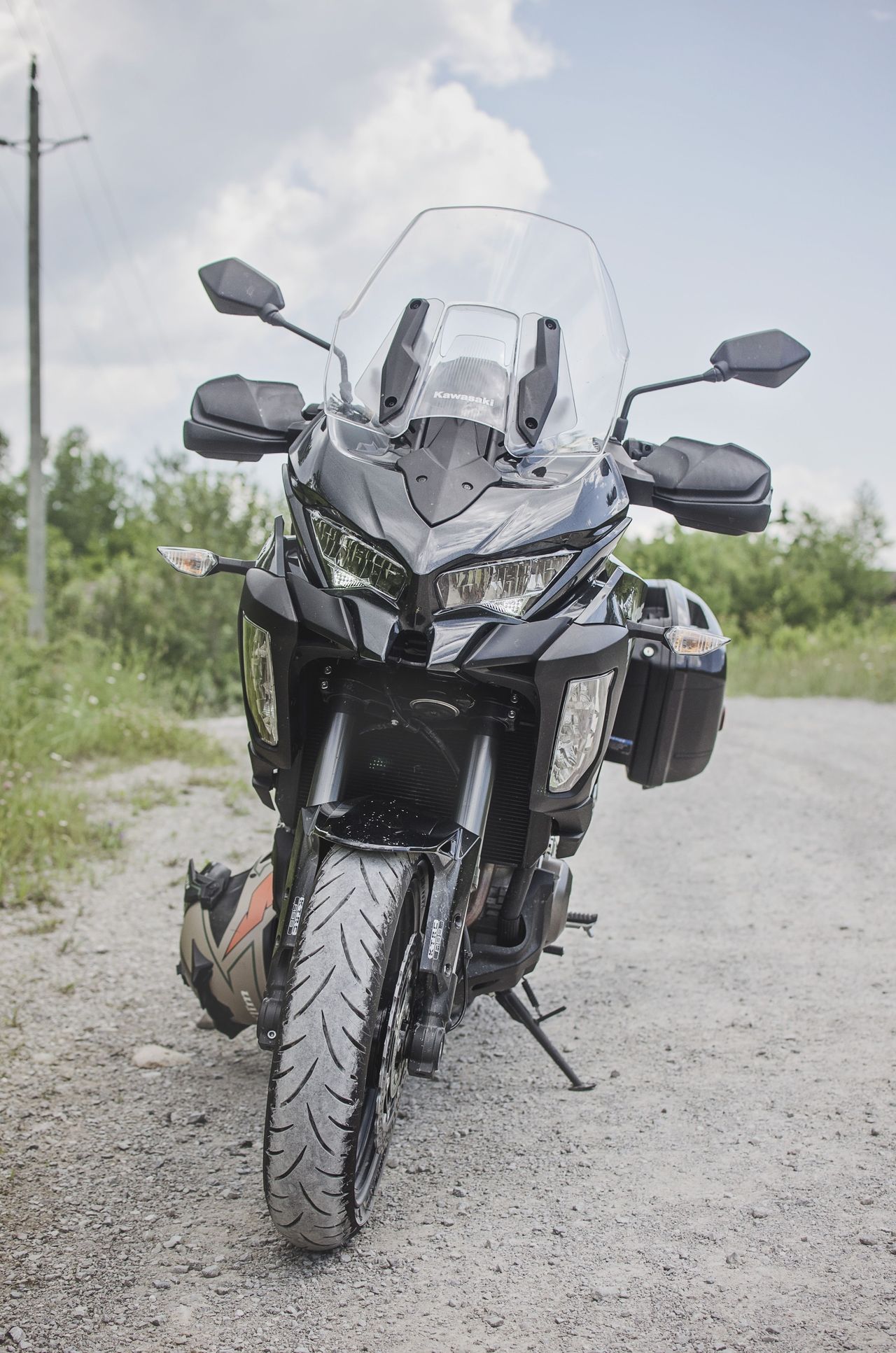
The Versys 1000 shares the same compact double headlight look of most of the Kawasaki street models
With electronically adjustable front and rear suspension, traction control and anti-lock brakes, the pilot can customize their ride for different riding conditions and preferences. The electronically controlled cruise control is the icing on the cake for those long days on the superslab and the quick shifter is a lazy man's dream in the city. The saddle is very comfortable also, with the perfect balance between plush and firm.
2020 Kawasaki Versys 1000 LT SE
First Impressions: Sporty, High-Tech and Tall
The 2020 Kawasaki Versys 1000 LT SE is a sharp looking modern bike with clean sporty lines. There’s no mistaking it for a supersport though with its tall handlebars, high windscreen and the signature 28 L hard side cases. The array of buttons, the large, bright and colourful display with Bluetooth connectivity via the Rideology app (Android or iPhone) flaunt the amazing amount of technology on this machine, and make you feel like you’re in command of your own spaceship.
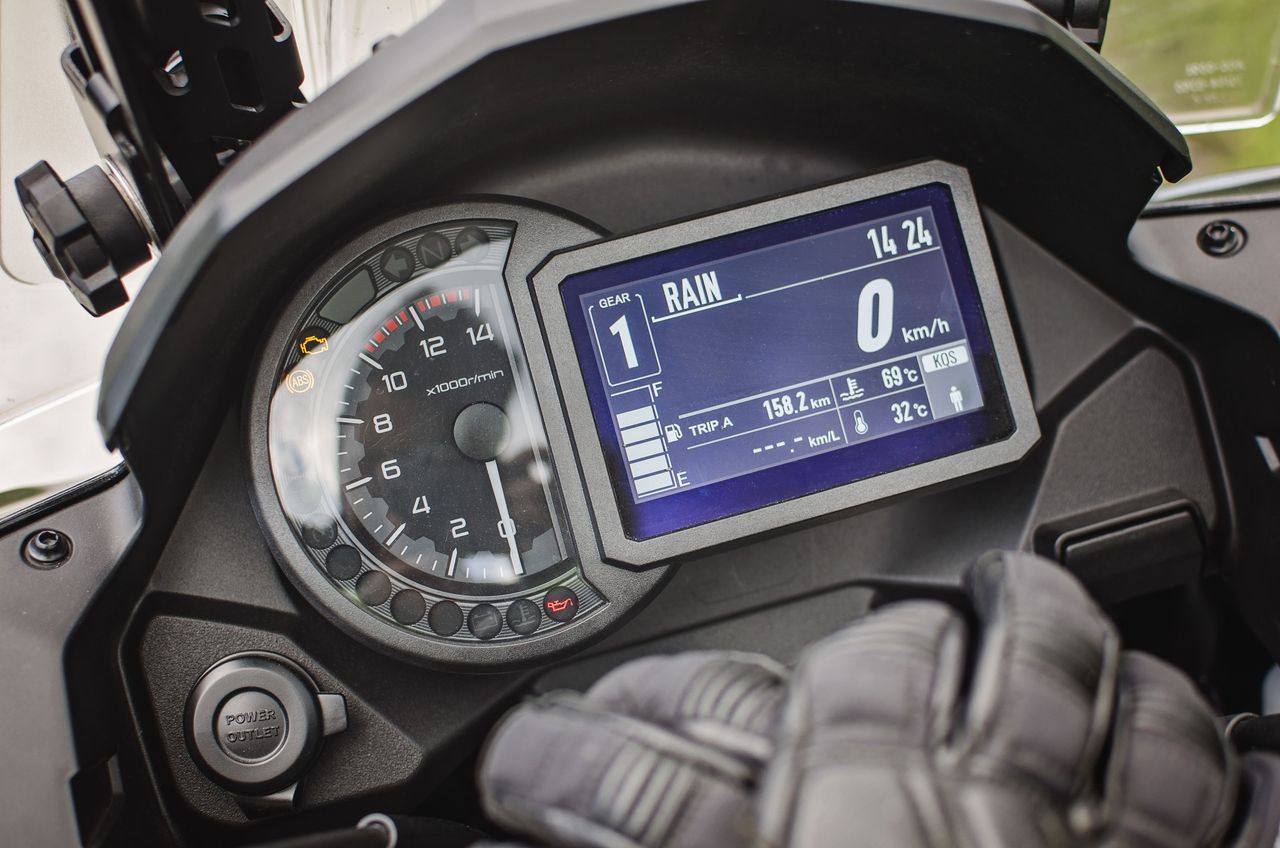
2020 Kawasaki Versys 1000 ABS LT SE cockpit with analog tachometer and large bright display
Throwing your leg over for the first time you’ll notice the relatively high seat height (840mm or 33 in) which feels even taller with the wide seat. If you’re like me, with shortish legs, you’ll be on your tippy toes pulling the hefty 257 kg or 566 lbs (plus luggage) upright. However, even at parking lot speeds, the weight seems to disappear and is easy to handle with the wide bars.
Electronic Cruise Control Makes Highway Droning A Breeze
As mentioned previously, the electronically controlled cruise control is what really elevates the Kawasaki Versys 1000 ABS LT SE as a long haul road tourer. It makes highway droning much more comfortable and relaxing making it possible for you to release your throttle hand resulting in less tension in your arms, shoulder and neck. The result is allowing you to stay safely focused on riding.
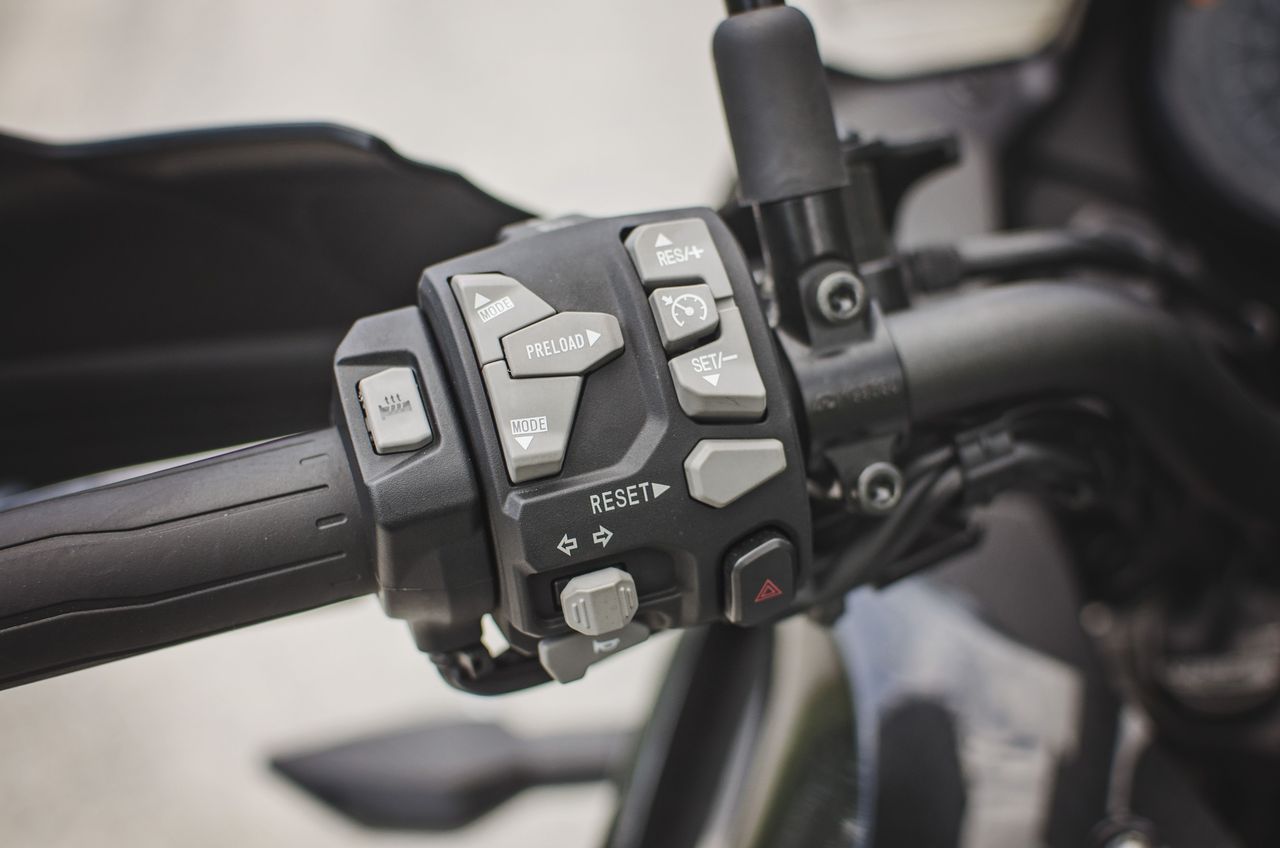
Left Cluster sports a lot of buttons to testifies to the amount of high tech on the 2020 Versys 1000 ABS LT SE
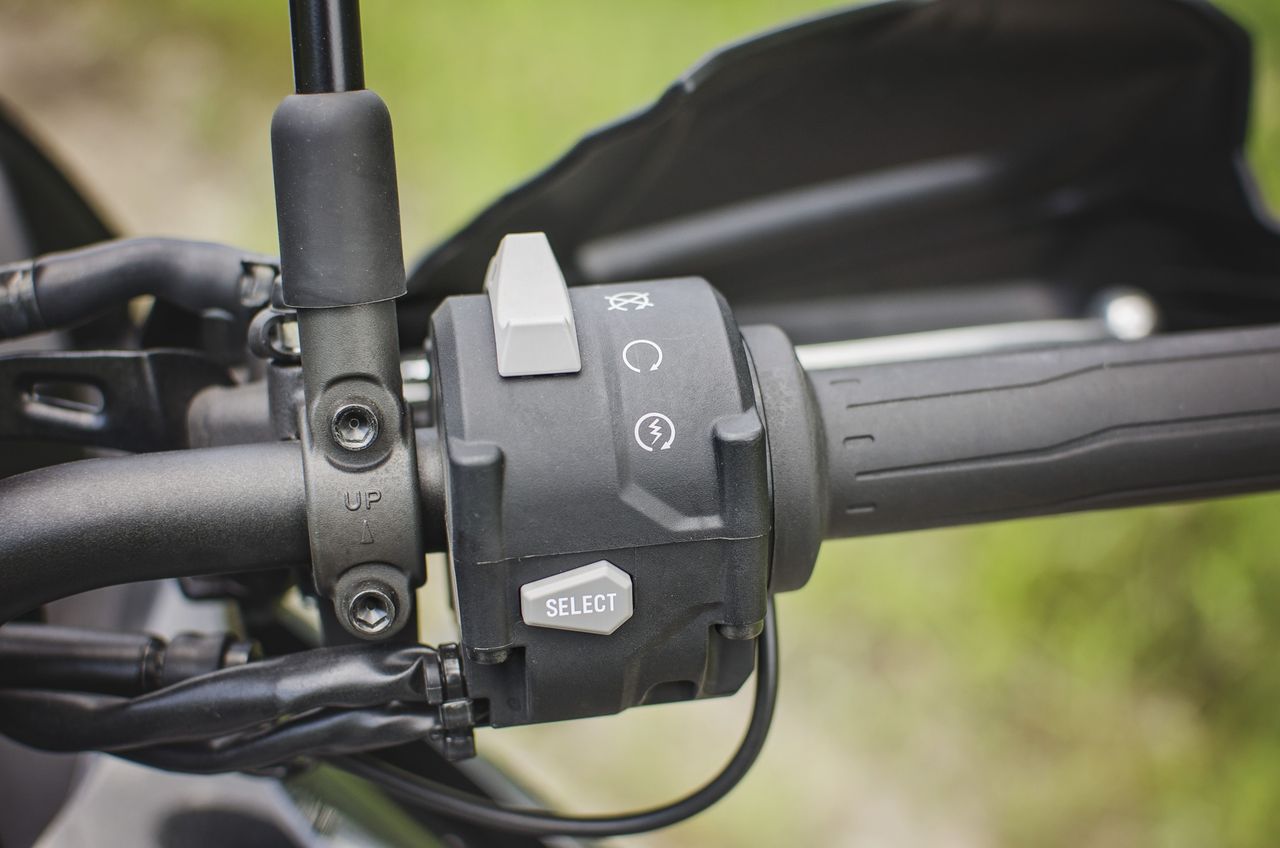
The right cluster is more typical with just a slider to start the engine and a select button for the menu.
However, there could be further refinement in the cruise control. My main complaint is the harshness of the transitions; ie. when the cruise control engages and disengages. I found the throttle had to be kept constant while pressing the “Set/-“ button on the left cluster. Even still, the engine would often cause the bike to lurch forward as the cruise control took over when I took my finger off the “Set/-“ button. Likewise, when turning off the cruise control, the throttle instantly goes to zero and jerk my head forward as engine braking immediately hits. In both cases, it is a jarring experience for the pilot and especially the passenger if they weren’t expecting it. Hopefully this can be improved by a dealer software update.
A cool feature Kawasaki added with the cruise control is the ability to turn the throttle backwards a few degrees from the neutral position to cancel it. You can also use the brakes, or push the cruise control on/off button. While it’s on, you can still use the throttle to increase your speed, and resume the set speed with releasing the throttle.. However, if you release it too quickly, the throttle position may go into the “negative,” canceling the cruise control and again jerking your head forward as the engine braking hits unexpectedly. Overall though, the electronic cruise control is an excellent addition.
Quick Shifter: Smooth Premium Feature
Kawasaki also adds a quick shifter (aka Kawasaki Quick Shifter or KQS) allowing the rider to keep the throttle open while clicking the gear lever up to change gears. Is it necessary? Not at all, but it’s part of the premium features that reinforces the Versys 1000 ABS LT SE as a top contender.
I found shifting early around 3000 - 3500 was fairly smooth but if you were attacking some twisties in sport mode, it had no problem at high revs. Quick shifting down required the rider to be off the throttle and was very smooth when braking. Whether quick shifting up or down, it was always accurate and never missed a shift.
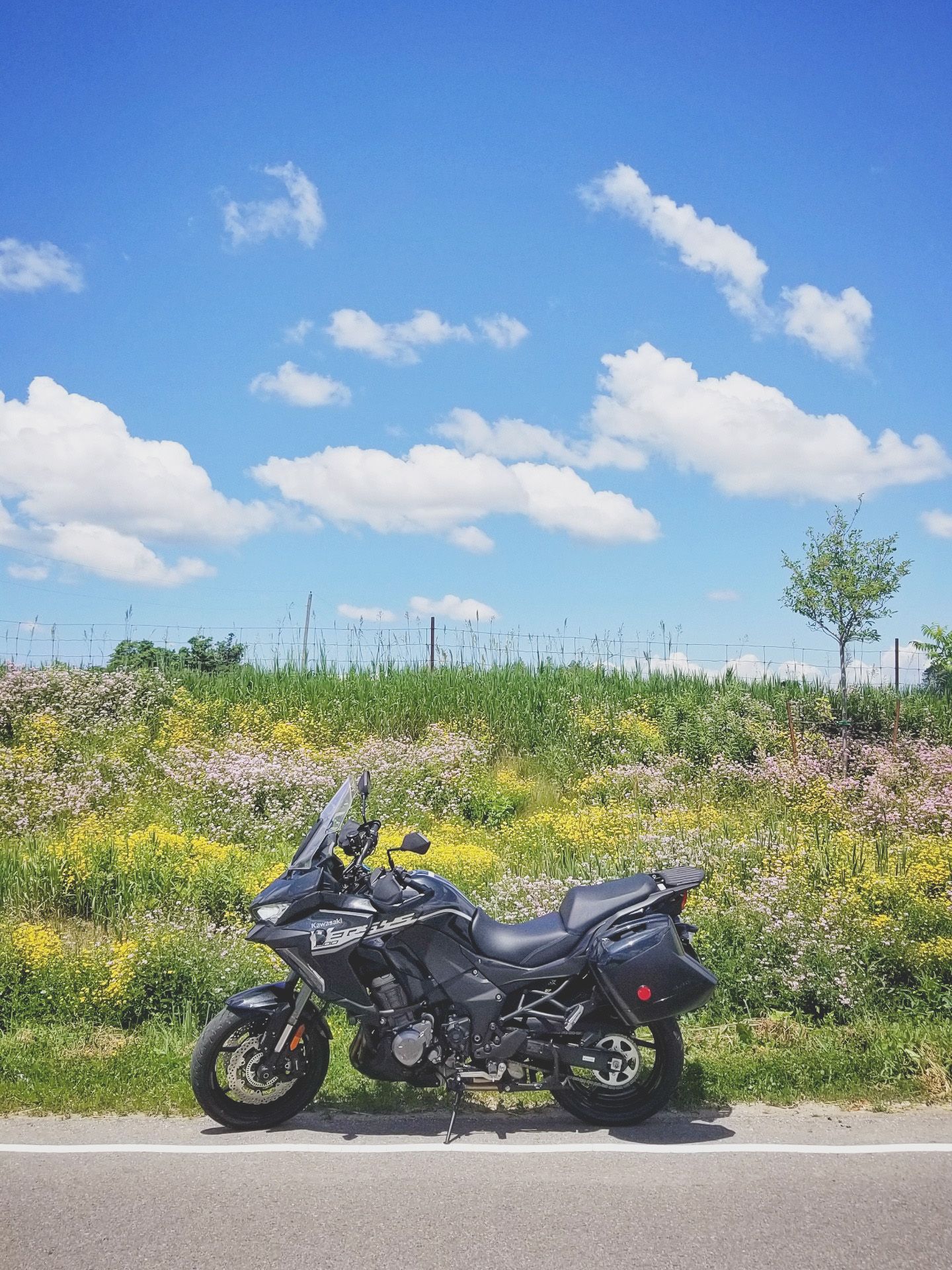
At home on country roads or on the highway
4 Riding Modes Included
For the most part, I preferred “Rain” mode as it gave the softest, plushest ride. However putting it into sport mode really woke the machine up and made the engine and handling feel like a sport bike.
To adjust the intensity and sensitivity of the throttle response, suspension (aka Kawasaki Electronic Control Suspension or KTRC), traction control (aka Kawasaki Traction Control or KTRC), and ABS (or Kawasaki Intelligent Anti-lock Brake System or KIBS), 3 integrated and 1 fully customizable mode are included:

4 Riding Modes to adjust to varying conditions
Positioned with Suzuki Vstrom, Yamaha Tracer 900 GT, Triumph Tiger 900 GT Pro and Ducati Multistrada
Within its own brand, the Kawasaki Versys 1000 ABS LT SE is an upright tourer compared to the sport-oriented Ninja 1000SX and a little more “adventure” than the Concours 14 sport tourer. Kawasaki seems to have spent time and effort unifying the look of most of their street models which includes the Ninja, Z, and the Versys with the compact angular double headlight which strengthens the Kawasaki branding.
You can tell a lot about the manufacturer's vision for the bike by their choice of tires, in this case, Bridgestone Battleax Sport Touring T31 which is a 100% street tire, despite Kawasaki using the word “adventure” in its marketing for the Versys 1000 ABS LT SE.
Within this segment are also the Suzuki Vstrom 100X ABS, Yamaha Tracer 900 GT, Triumph Tiger 900 GT Pro and Ducati Multistrada 950.

The Versys 1000 shares the same compact double headlight look of most of the Kawasaki street models
Power, Fuel Economy and Handling
The Versys 1000 ABS LT SE shares its power plant with the Ninja 1000SX but is tuned to provide improved low-mid range power. The key specifications are:
- Engine: 1043cc Liquid cooled 4-stroke in-line Four
- Power: 88 KW / 118 BHP @ 9,000 RPM
- Torque: 102 N.m/ 75 ft lbs @ 7,500 RPM
For long tourers, fuel range and economy are considerations. Tank capacity is 21 L (5.5 US Gal) and I averaged 340 km (211 mi) per tank (until the low fuel warning light flashed) and a combined economy of 5.6 L/100 km (42 MPG). The fuel gauge however was remarkably annoying as it indicated full (6 bars) until I had ridden 185 kms. You could have anywhere from a full to less than half a tank left while the fuel gauge indicates full! And as expected, the indicator bars disappear quickly after that.
The three riding modes made a huge difference in how the bike behaved. If you wanted a comfortable gentlemanly ride you’d be happy selecting “Rain” mode. If you want sportbike-like acceleration and carve some corners, Sport mode is your friend.
The Bridgestone Battleax Sport Touring T31 tires provide ample grip to scrape your pegs, should you lean that way. The wide bars also provide easy leverage to steer the bike whether you’re countersteering at speed, or turning slowly in a parking lot.
The combination of the body work and adjustable windscreen did an excellent job of keeping the wind off my knees to my torso, and never created any turbulence around my helmet (I’m 5’7”). The hand guards also provided good protection from the elements and combined with the heated handgrips provide more comfort in cold and inclement weather.

Hard packed gravel is fine for the Versys 1000.
Offroad / How “Adventure” is the Versys 1000 ABS LT SE ?
I wanted to see how “adventure” the Versys 1000 ABS LT SE was so I found a gravel road north of Orillia, Ontario. I used the “Rain” mode as it had the lowest throttle response, highest traction control, softest suspension, and highest ABS settings.
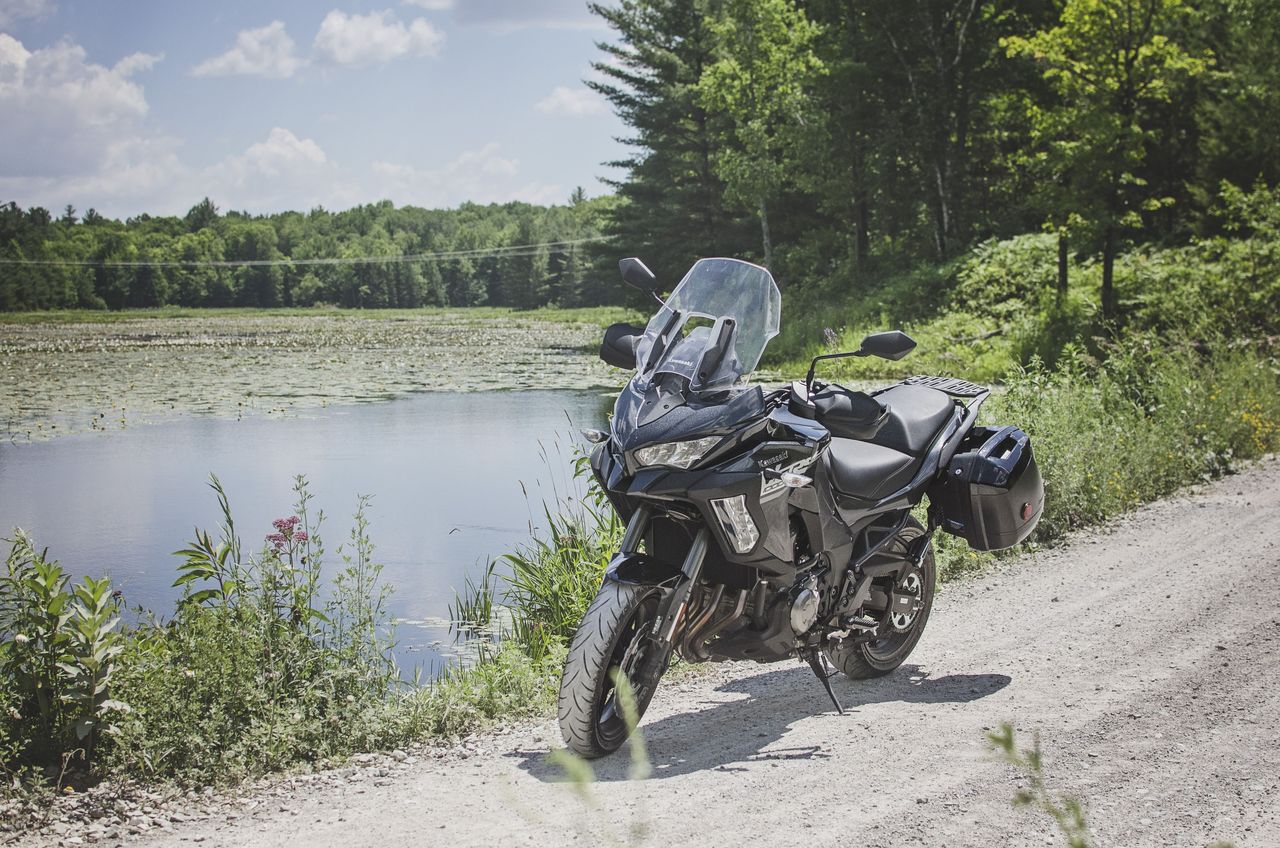
How well does the 2020 Kawaski Versys 1000 ABS LT SE do offroad?
The weight helped smooth out the ride in uneven and loose terrain. The traction control settled the rear and avoided unwanted sideways motion when I was hard on the throttle in loose gravel, and the ABS was confidence inspiring. But with the sheer mass of the bike, short travel suspension (150mm Front, 152 mm rear), short wide 17” (120/70ZR17) front wheel with street rubber, and lots of shiny breakable plastic parts like the side cases, I decided to stop when I arrived at a steep downhill section with a wash. I was by myself and wasn’t looking forward to dead lifting 567 lbs or explaining to Kawasaki why I returned it with only one shiny side.
You would be fine taking it offroad to say a cottage or a campsite, but it isn’t suitable for anything much more than smooth hard packed gravel.
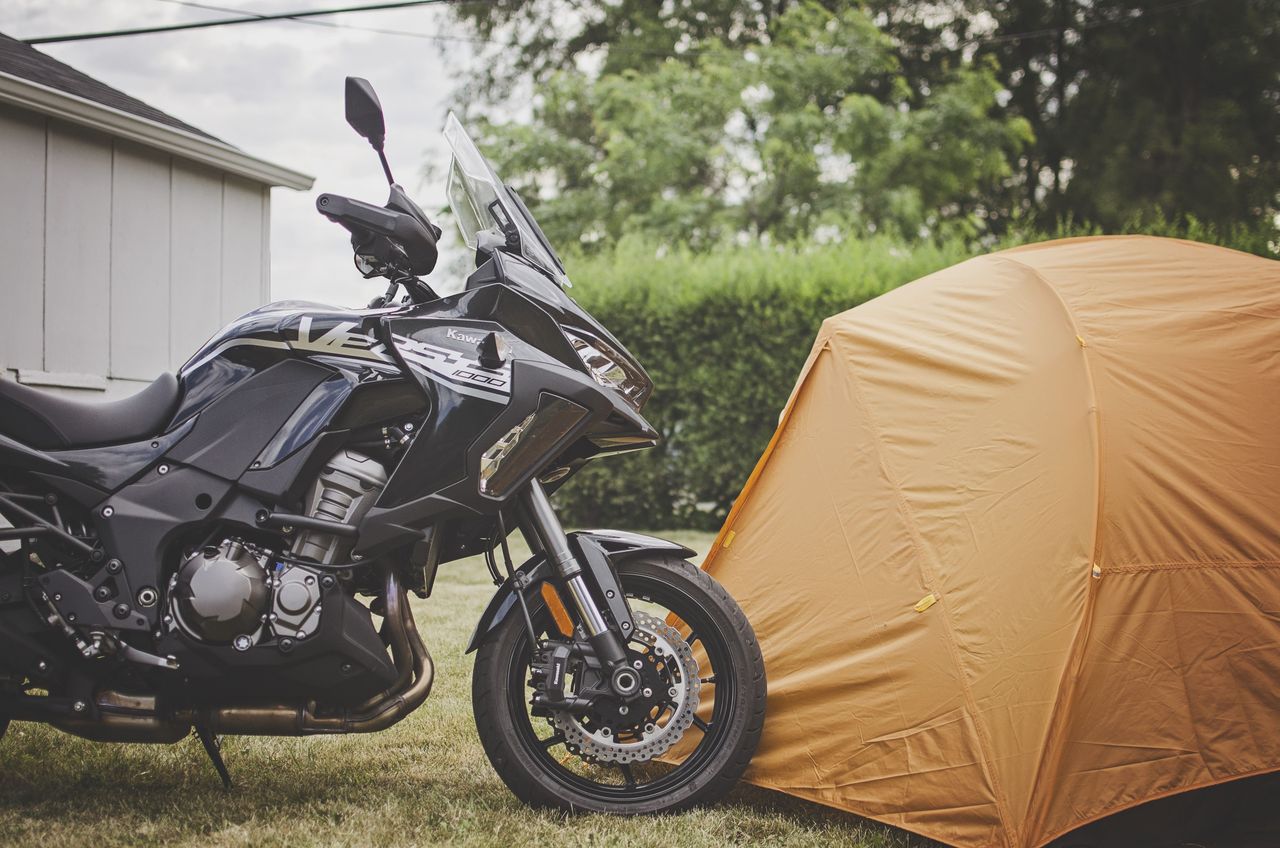
A cottage or a campsite is fine, but it isn’t suitable for much more than smooth hard packed gravel.
Display is Bright, Large, Full Colour and Large
The full colour TFT display is large, bright and shows all the information you’ll need and more, including lean angle, throttle position, front brake pressure, acceleration/deceleration, just like the pro’s in MotoGP!
I would also love it if Kawasaki provided a GPS Navigation option, or even better a full function infotainment interface like Android Auto or Apple CarPlay .
Rideology app
The Rideology app which is available on Android and iOS provides three main functions:
- View vehicle information and check the latest status of your vehicle
- Modify vehicle settings before riding such as Ride Mode and Electronic Suspension
- Keep a detailed riding log that can be played back for review. You can also view riding route, distance and time traveled.
1 and #2 can be done on the bike with your gloves on and I’d rather use a dedicated app such as EatSleepRide (of course!), to record and share my rides.
What I Liked
- Engine was amazing: Smooth and strong
- Buttery Smooth transmission and quick shifter: They never missed a shift
- Cruise Control
- Ride Modes to adjust throttle response, suspension, traction control and ABS
- Great brakes
- Amazing handling
- Ignition key-matched locks for the luggage
- Slipper Clutch
- Sleek and sporty appearance
What Could Be Improved
- Fuel requirement: The engine requires 90 octane, aka premium gas which means about a 30% increase in fuel costs
- Fuel gauge measures full until 185 km. ie. You don’t know if you have a full or half a tank left!
- Cruise Control: Transitions too harsh
- Changing vehicle settings slow: Due to the complexity of the bike, there are many things you can tune. However, going through the menu system can be frustrating as you have to press the buttons and wait for the selection to take place. For example, I wanted to change the fuel economy from km/L to L/100 km. I couldn’t do it at a stop light as I didn’t have enough time to go through the menu selections. I had to pull over into a parking lot. Sidenote: Who measures fuel economy in km/L anyways, and why is that the default?
Comfortable. Smooth. Powerful.
As a whole, Kawasaki got many things right on the 2020 Versys 1000 ABS LT SE. The highway and long distance touring is where this machine really shines, but despite the “adventure” label, is not suitable for off-road. The riding modes (adjustable throttle response, suspension, traction control, and ABS) allow for better performance in a wide variety of conditions. The electronically controlled cruise control was almost amazing, but transition in and out of the set speeds proved too harsh, and was the only reason I didn’t include the word “refined” in my 3 word summary.
And with the waterproof side cases, the Kawasaki Versys 1000 ABS LT SE could double as a commuter. Afterall it did survive the “Streets of Toronto Proving Grounds” during construction season!

The Versys 1000 can also double as an urban commuter with it's waterproof side cases
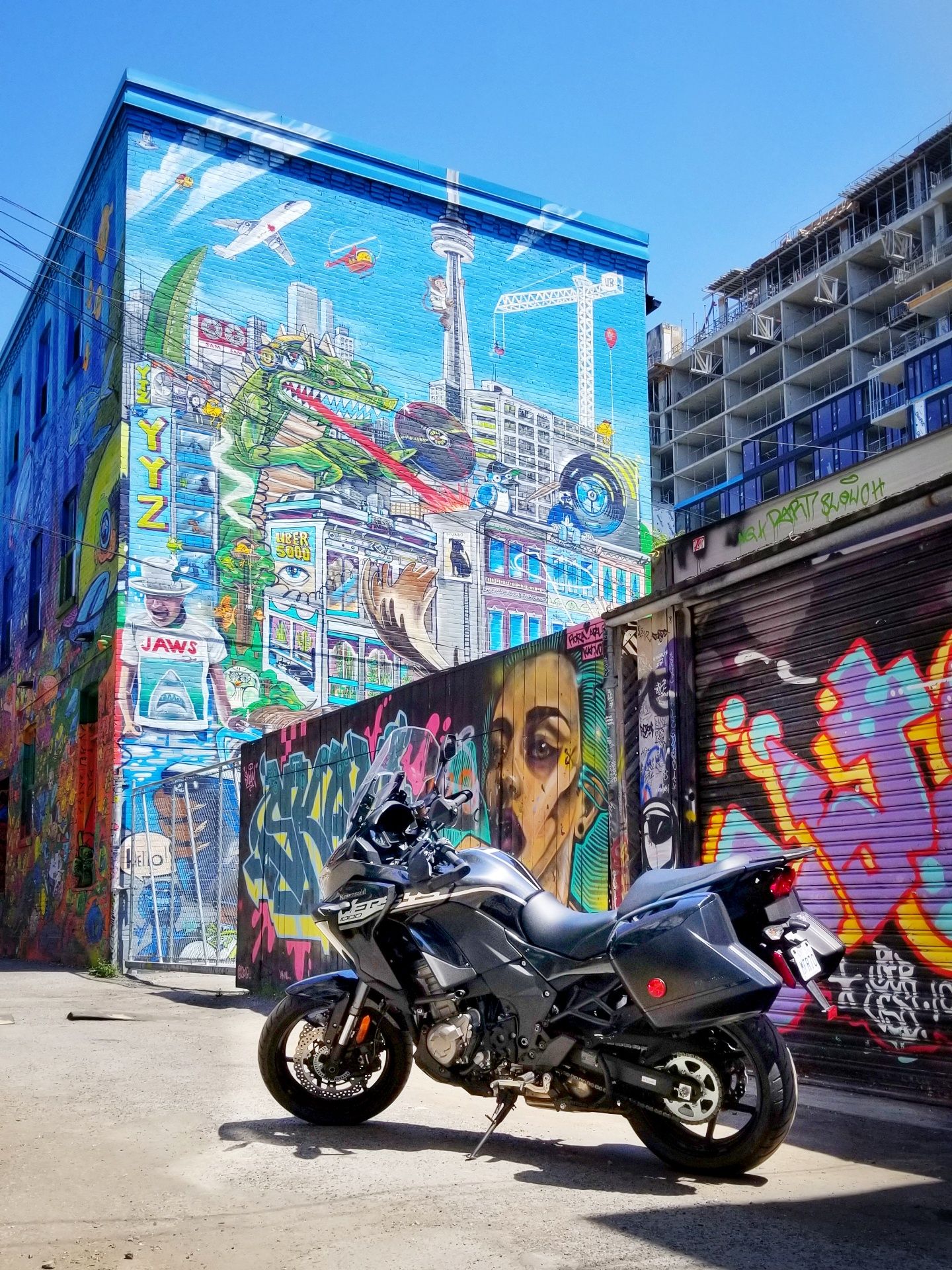
The Kawasaki Versys 1000 ABS LT SE also survived the “Streets of Toronto Proving Grounds” during construction season!
Accessories
Kawasaki OEM accessories such as light bars, lower seat, luggage, etc. can be found on the Kawasaki Canada website.
Specifications
- Engine: 1,043 cc inline four
- Power: 88 Kw (118 HP) @ 9,000 rpm
- Torque: 102 Nm @ 7,500 rpm
- Transmission: Six-speed with assist and slipper clutch
- Drive: Chain
- Chassis: Twin tube, aluminium
- Suspension, front: 43 mm inverted fork with KECS-controlled* compression and rebound damping, manual spring preload adjustability, and 150 mm of travel
- Suspension, rear: Horizontal Back-link, BFRC lite gas-charged shock with piggyback reservoir, KECS-controlled* compression and rebound damping, and electronic spring preload adjustability, and 152 mm of travel
- Wheels: 120/70ZR17 front, 180/55ZR17 rear
- Brakes: Dual semi-floating 310 mm petal discs with four-piston, radial-mount calipers front / 250 mm petal disc rear
- Curb weight: 257 kg (567 lbs)
- Wheelbase: 1,520 mm Length: 2,270 mm
- Width: 950 mm
- Ground clearance: 150 mm
- Seat height: 820 mm (32 in)
MSRP: $19,899 CAD as tested
- *KECS: Kawasaki Electronic Control Suspension – Electronically adjusts compression and rebound in the front and rear suspension, and preload in the rear
- **KTRC: Kawasaki Traction Control – Traction Control
- ***KIBS: Kawasaki Intelligent Anti-lock Brake System – The rest of the world calls it ABS
- ****KQS: Kawasaki Quick Shifter
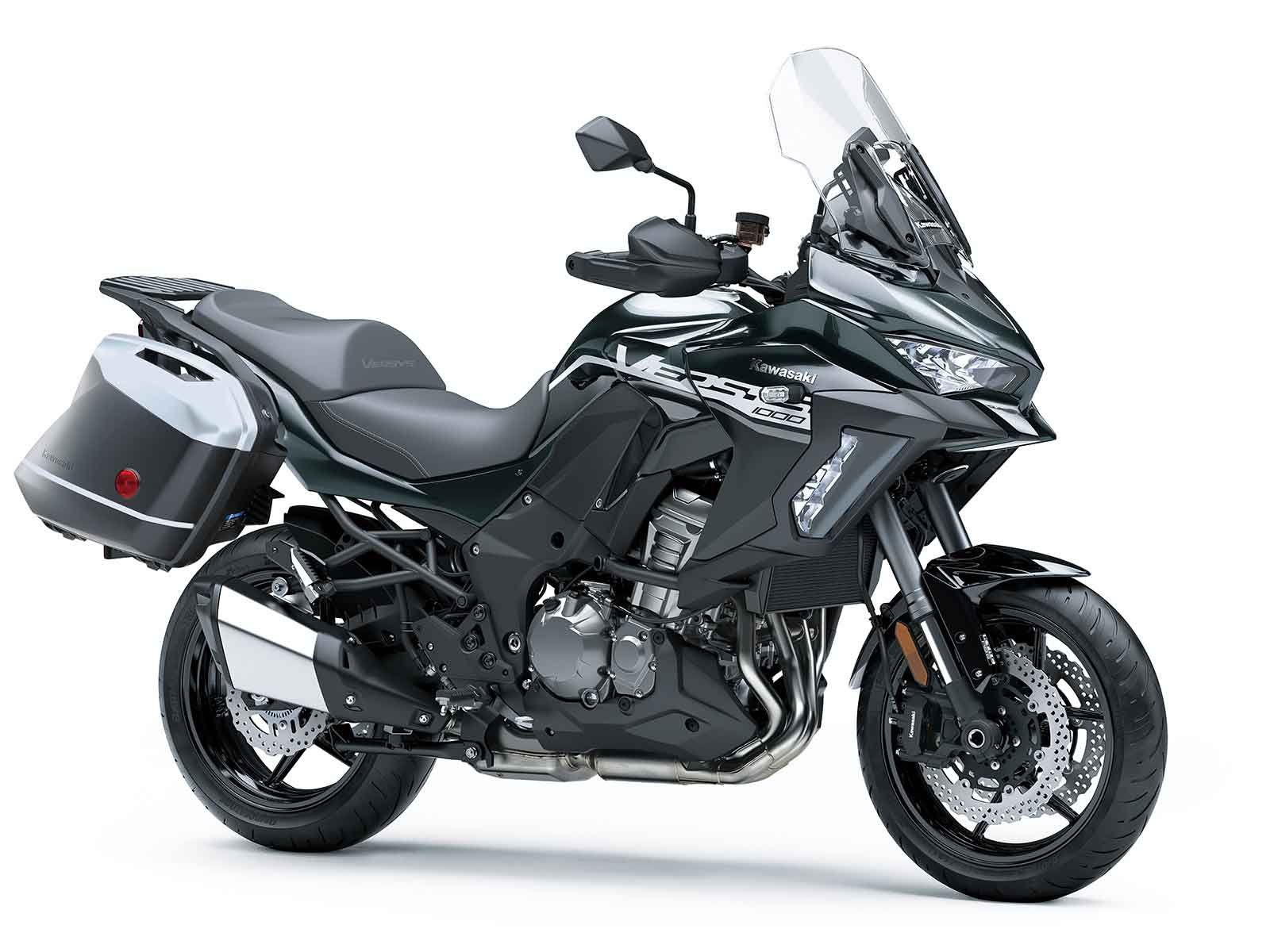
2020 Versys 1000 ABS LT SE. Photo courtesy of Kawasaki
You must be logged in to comment
Login now
I definitely appreciate this review (how is this an ad?) as I am in the market for this type of bike. My dream bike would be the Duke Multistrada 1600, but the bank just laughs at me!
@Station8 Thanks for your feedback. There are definitely drawbacks to this bike which I've mentioned above. Also, I received no compensation for this, nor do I have any relationship with Kawasaki. These are my honest opinions about this bike, definitely not an ad.